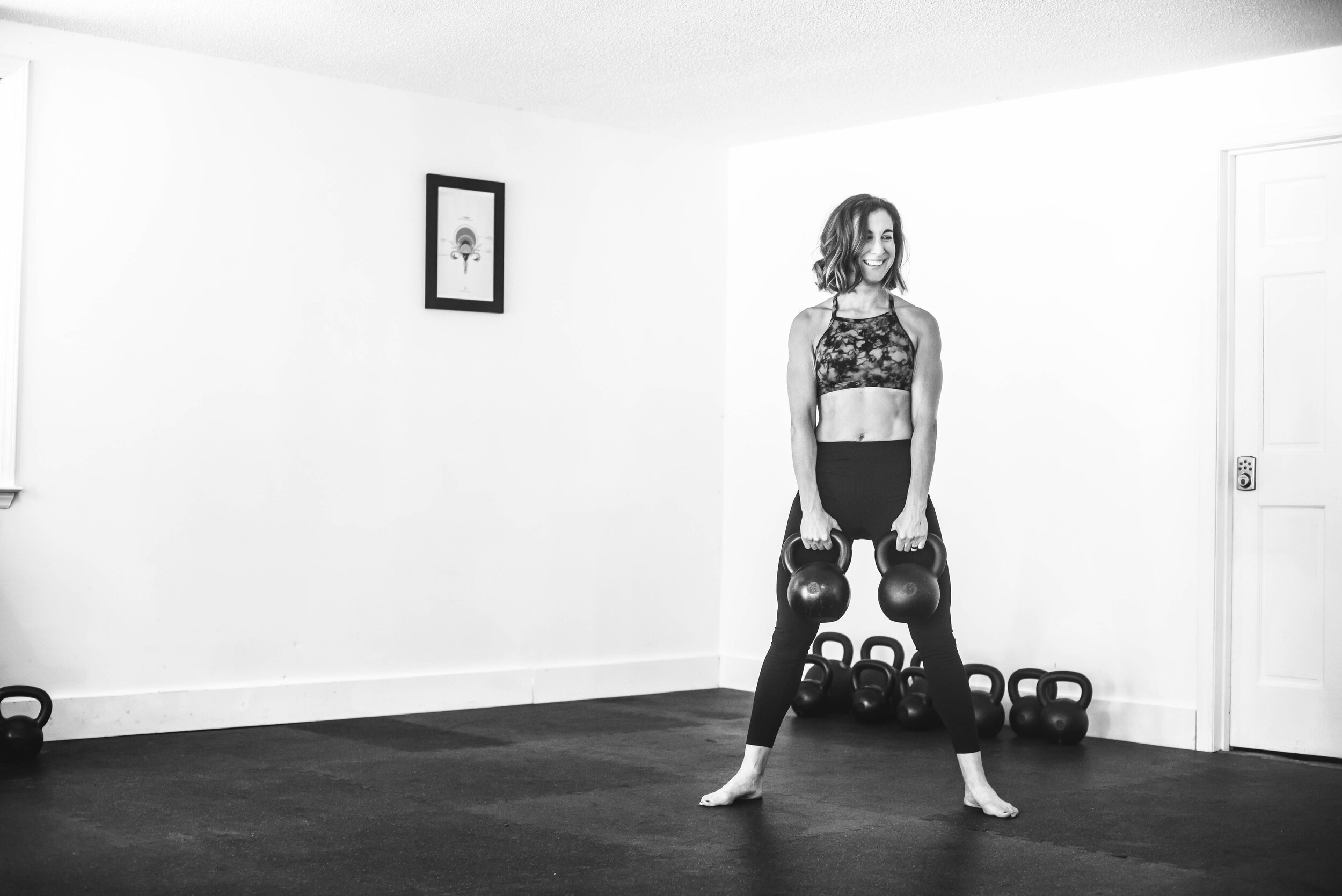women have different training needs than men do!
On a basic level we have different sized Type 1 and 2 muscle fibers than men do, making us better adapted at using fat for fuel than men.
We recover faster within a workout from all-out effort training than men do.
We can do lots of low rep, high weight strength training and while we will add on some bulk in the form of muscle, we MOSTLY increase the power and efficiency of our muscles.
We lose weight more slowly than men and hold on to more fat (it's how we fuel physical exercise) than they do.
Women need longer recovery periods between training than men do, because we use stored glycogen more slowly than men do.
We perform differently over the course of a month when we menstruate.
Post-menopause we lose our ability too metabolize fructose.
But I think the MOST important truth about fitness training for women is that biologically, exercise and physical ability ISN'T the body's priority.
Keeping us fertile and ready to make babies is.
And it doesn't matter if you aren't planning on becoming pregnant.
It doesn't even matter if you are past menopause.
There are biological implications to the fact that we are equipped to grow, birth and feed babies and THAT my friends means LOTS of different things for our fitness practices, but the one common theme that I have learned from studying hormones, pelvic floors, gut health and the nervous system is that all female bodies need to feel something in order to perform well and that something is
SAFETY.
If you want to ask your body to do things for you, you FIRST have to communicate to it that a it is safe.
When it doesn't feel safe, then it tells your body-"HEY, shut down the reproductive hormonal pathways and brace for stress."
The problem is that women of child-bearing age NEED all of these pathways like ovulation and menstruation to be in working order in order to respond well to exercise and training.
They are a non-negotiable, regardless of our reproductive plans and priorities.
Safety=performance
We need the body to feel safe, challenged, sure, but SAFE!
How do we do that?
Well I'll tell you how we DON'T do it.
We don't starve it.
We don't beat on it.
We don't let it sit around sedentary creating mechanical stress.
We don't fill it with alcohol and other toxins that it struggles to process.
We don't let it grow accustomed to sitting and then march it to the gym and tell it to perform like a movement-accustomed athlete.
We don't hate it.
There are LOTS of programs out there that unfortunately encourage women to do a number of these things, but mine are NOT amongst them.
In fact I see that the KEYS to helping the body feel safe in fitness and exercise are the following:
1. Calm the nervous system with effective diaphragmatic breathing BEFORE and after exercise and as often as possible.
2. Learn how the body functions well enough so that you can recognize red flags an respond to them appropriately and respectfully.
3. Value QUALITY of movement over quantity all of the time.
4. Rest and recover adequately
5. Build balanced strength and muscle
These are attributes can actions that I'd like to see you value and prioritize as well as you embark on fitness journeys today, next week, next year!
These and many other female-specific themes so happen to also shape my programming and my coaching style.
Today all the sales on my programs are ending.
So grab them NOW to get to work in a manner that repeats your unique and powerFULL female physiology!
Want to strength train?
Kettlebells For Cool Kids™ is my kettlebell instruction course that teaches you everything you need to know about training with kettlebells in a manner that honors PROPER technique, your core and pelvic floor needs (hello! women are different and we need to talk about this.Vaginas, births and hormones are game changers) and respects your BUSY schedule.
You don't need to know ANYTHING about kettlebells to do this course, but you do have to have a CAN-DO attitude and a willingness to work on skill-based training that makes you feel bad-ass.
You get 3 workouts per week ALL of which are designed to teach you the skill of training with KB's.
Oh and DON'T forget all the 90's themed PLAYLISTS!!!!
**Kettlebells For Cool Kids is for women that have been CLEARED by their pelvic floor PT for exercise and understand how to manage pressure, have neutral alignment and can lift weight without symptoms.
If that is NOT you yet, then grab Connect™ FIRST and learn how to strength train with that program.
This program is ALSO majorly on sale right now through Monday (12/2) at midnight.
Learn more here
Want to strength train, but FIRST attend to your core and pelvic floor needs?
Connect Your Core & Pelvic Floor™ is for the woman that has core and pelvic floor problems. Weakness or over-recruitment, we are addressing them BOTH.
Prolapse or leaking.
Movement is NOT off the table for you.
You just need to spend some time learning and understanding what it happening with your body now so you can work WITH it and confidently train it to be strong and powerful again OR for the first time.
You get instruction and education on re-building core and pelvic floor strength AS WELL was a movement and strength training program to get you started with your return to movement.
Learn more about Connect™ here. Enrollment AND major sale pricing go away Monday (12/2) at midnight.
Use the code HOLIDAYHEALTH
Connect Your Core and Pelvic Floor™
Not ready to grab my course but you’re hungry for MORE?
Get on my email newsletter list for lots of free goodies, info, support female fitness hacks!~
Keep in touch
Get free workouts
About Sarah…
Sarah Smith is a Functional Pelvic and Gut Health Educator Level, Strength Coach, Original Strength Pro, Level 2 Russian Kettlebell Instructor and postnatal fitness specialist and functional pelvic floor and with a Masters in Soil Science and Agriculture.
She helps women feel confident, capable, content and STRONG in their bodies!
Sarah is a published author and has a decade experience conducting research at The National Institutes of Health, National Cancer Institute, University of Arizona and North Carolina State University.
She uses evidence-based strategies to help her clients grow strong, and conquer their pelvic floor dysfunction, pelvic organ prolapse, diastasis recti and gut health complications and other injuries or health conditions.
Sarah is a mom to three wild boys and one English Bulldog.
She loves kettlebells, leisure walks, chickens, soil, coffee, not folding laundry and watching people move-in a non-creepy way.










